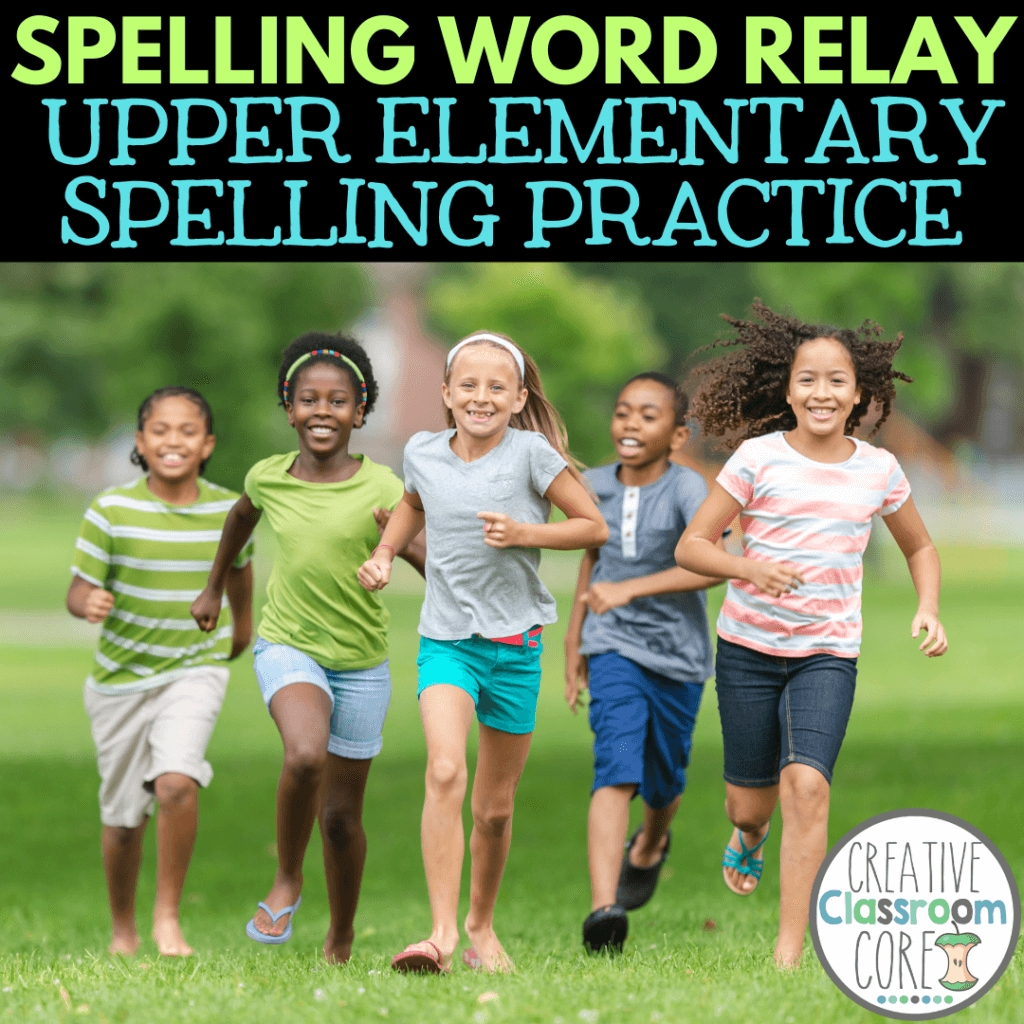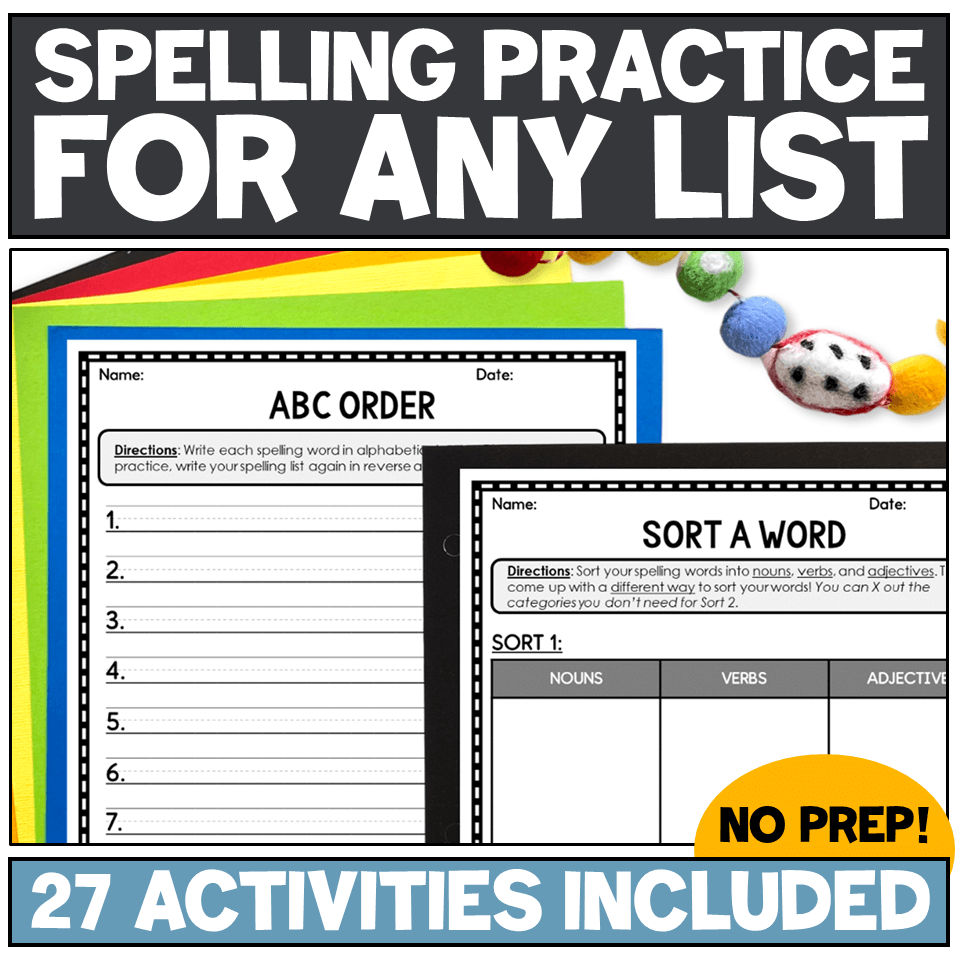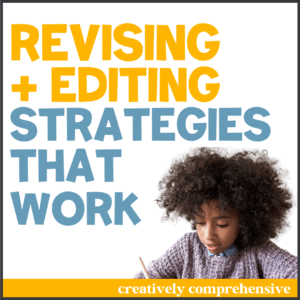by: Marianna Monheim, Marissa Despins, and Rachel Deroche updated March 9, 2024
How to Combine Research and Practice
Research shows that the best ways to practice spelling words (drills, dictation, and the like) may not be activities that our upper elementary students are thrilled to do. So, how do we make sure that spelling practice is both meaningful and fun enough for kids to buy in? Read below to find some top tips from experienced intermediate teachers.
Table of Contents
Make Spelling Word Practice Multisensory
Not only can multisensory instruction provide many amazing benefits in your classroom, but it is also one of the easiest ways to increase student engagement in rote activities. In case you’re unfamiliar with the term, “multisensory” simply means purposefully adding a combination of sight, hearing, touch, or movement elements to learning activities. As students engage multiple parts of their body, they also ignite multiple areas of the brain, which helps material “stick.”
By the way, it’s easier to incorporate multisensory practice than you think! Here are a few ideas to get you started:
Visual Activities
- Use colors to divide syllables or highlight a specific spelling pattern
- Create picture dictionaries for students to reference independently
- Have students draw a spiral and write their spelling words around the curves
Auditory Activities
- Students can record themselves spelling words out loud
- Orally practice spelling words with a partner
- Sing words that follow a spelling pattern to the tune of a familiar song
Tactile Activities
- Trace words in sand or on sandpaper
- Form words with PlayDoh
- Tap out letters or syllables for each spelling word
Kinesthetic Activities
- Sky write each spelling word
- Perform a simple movement (i.e. jumping jacks) while spelling out words
- Clap or stomp out letters or syllables
If you read this and are thinking, “…for upper elementary? Really?” trust me – the benefits of multisensory instruction don’t end in the primary grades. Get out the shaving cream and let your kiddos have fun while they practice!
Grab some done-for-you multisensory spelling practice sheets for your classroom! These student-tested, teacher-approved activities are purposeful and fun. They work great for homework or independent practice. Click below to learn more!
Use the "Spoonful of Sugar" Approach
You probably don’t have a class full of students eager to listen to and dictate 10-15 sentences every day to practice their spelling words. However, we can use what we know about student motivation to make sure they are still getting quality spelling instruction each week!
One of my best tips is to make one not-so-engaging activity mandatory while allowing students to choose the rest of their spelling practice activities for the week. Let’s be clear – is making a word search the most effective way to practice spelling words? Nope. Can you use it as a tool to get students to continue practicing after using their words in a sentence? Ding Ding Ding!
Interested in learning more? Check out my system for spelling success in this blog post.
Get to the Root of Things
Rachel from Uniquely Upper shares, “To master spelling in upper elementary grades, diving into the roots of words—especially those from Greek and Latin—can be a game-changer. By understanding these roots, students not only improve their spelling skills but also enhance their vocabulary and comprehension. Here’s a brief exploration of how Greek and Latin roots can unlock the world of words for upper elementary students.
Strategies for Mastery
1. Root Word Trees: Create visual representations of words that stem from the same root. This helps in visualizing the connections between words and their roots.
2. Root Word Detective: Encourage students to become word detectives, looking for root words in their reading. This activity makes learning interactive and fun.
3. Root Word Journals: Keep a journal dedicated to collecting new words and their roots. This ongoing project can be a personal vocabulary builder that students take pride in.
Students unlock a new dimension of language learning by exploring the structure of words through Greek and Latin roots. This approach helps in spelling mastery and fosters a lifelong curiosity and appreciation for the power of words.
To learn more strategies, check out Uniquely Upper’s page.
Get Physical with Spelling Word Practice

Marissa from Creative Classroom Core does her best to incorporate movement into her lessons whenever possible. One of her favorite ways for students to practice spelling words is by having them engage in a “Spelling Word Relay Race.” To complete this lively activity, Marissa divides the class into teams and sets up a course where students race to a designated spot to write a spelling word correctly before running back to tag the next teammate. This can be done on a chalkboard, whiteboard, or with paper and pencils set up at stations. Not only does this encourage physical activity and teamwork, but it also adds a thrilling competitive element to spelling practice. Teachers can tailor the difficulty by varying the distance of the relay or the complexity of the words, making it an adaptable and exciting method for enhancing spelling skills.
Check out more engaging activities to get students up and moving on the Creative Classroom Core blog!





